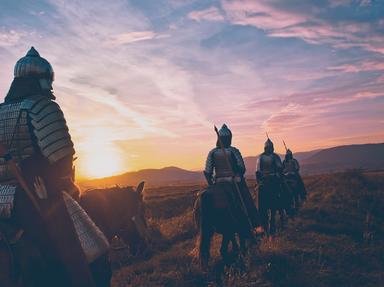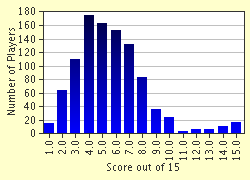Quiz Answer Key and Fun Facts
1. Which liner was sunk by a German U-Boat during the First World War, killing several Americans and strongly bolstering the pro-war lobby in the United States?
2. The Treaty on European Union which established the international organisation, the European Union, signed on 7 February 1992, was concluded where?
3. Although proceeded by three other dynasties - the Xia, Shang and Zhou - the leaders of this dynasty were the first to take the title of Emperor of China. Which dynasty is being referred to?
4. Which revolutionary overthrew the regime of President Mobutu Sese Seko in Zaire (now the Democratic Republic of Congo) in 1997?
5. In 1948 which party was elected to government in South Africa, and who was its leader?
6. In the 1590s which Japanese leader deployed a large number of troops to Korea in an effort to invade Ming China?
7. Which massive cataclysm in the 1850s and 60s shook the foundations of Imperial China and made way for the ultimate collapse of the ruling dynasty in 1911?
8. Who was the first president of the Republic of Uzbekistan following its independence from the Soviet Union in 1991?
9. Continuing to jump all over history we'll now go to medieval Europe. Which extremely powerful order of knights met defeat at the battle of Tannenberg when faced by the combined armies of Poland and Lithuania in 1410?
10. Taking another random leap now - to Southeast Asia. In which year was the ancient Cambodian city of Angkor sacked by Thai forces?
11. Whilst we're on the topic of attacks on ancient cities I thought I'd throw in an easier one for you scholars of Western history. What nationality was the bellmaker who engineered the cannons that allowed the Turks to take the city of Constantinople in 1453?
12. An unusual one now. Which was the only battle of the French Revolutionary and Napoleonic period that involved air power?
13. Which great Indian emperor's name translates to 'without sorrow'? This emperor ruled the Mauryan Empire between 269 BCE and 232 BCE.
14. Who is regarded as a black Messiah by the adherents of the Rastafarian religion?
15. Finally, which of the following was the name of a Soviet gulag camp?
Source: Author
Findlay
This quiz was reviewed by FunTrivia editor
bloomsby before going online.
Any errors found in FunTrivia content are routinely corrected through our feedback system.

